'A wealth of very good recipes' Frances Bissell, The Times 'A useful addition to your kitchen library' The Voice 'Wonderful ideas that will appeal to adventurous cooks' Lindsey Bareham 'Delightful' The Scotsman Caroline Sullivan ran a large Jamaican household in the parish of St Andrew, near Kingston, in the late nineteenth century. She was the author of the first ever book on the island's cooking, The Jamaican Cookery Book , of which this is a lightly revised version. CLASSIC JAMAICAN COOKING Traditional Recipes and Herbal Remedies Caroline Sullivan  Decorations by Mary Stubberfield Serif London This e-book first published 2014 by Serif 47 Strahan Road London E3 5DA www.serifbooks.co.uk Originally published, in slightly different form, in 1996, and as The Jamaica Cookery Book by Aston W. Gardner & Co., Kingston, in 1893. Revisions to this edition copyright Stephen Hayward, 1996, 2014 Decorations copyright Mary Stubberfield, 1996 Foreword copyright Cristine MacKie, 1996 Footnotes copyright Georgia Kandunias, 2014 This edition copyright Serif, 1996, 2003, 2014 All rights reserved. No part of this publication may be reproduced, transmitted or stored in a retrieval system, in any form or by any means, without prior permission in writing from the publishers ISBN 978 1 909150 21 8 e-book produced by Will Dady proof-reading by Georgia Kandunias Cover design by Pentagram CONTENTS
Decorations by Mary Stubberfield Serif London This e-book first published 2014 by Serif 47 Strahan Road London E3 5DA www.serifbooks.co.uk Originally published, in slightly different form, in 1996, and as The Jamaica Cookery Book by Aston W. Gardner & Co., Kingston, in 1893. Revisions to this edition copyright Stephen Hayward, 1996, 2014 Decorations copyright Mary Stubberfield, 1996 Foreword copyright Cristine MacKie, 1996 Footnotes copyright Georgia Kandunias, 2014 This edition copyright Serif, 1996, 2003, 2014 All rights reserved. No part of this publication may be reproduced, transmitted or stored in a retrieval system, in any form or by any means, without prior permission in writing from the publishers ISBN 978 1 909150 21 8 e-book produced by Will Dady proof-reading by Georgia Kandunias Cover design by Pentagram CONTENTS
Foreword by Cristine MacKie Preface Soups Fish Salt Fish Meat Vegetables Puddings and Preserves Ices Fruit Cakes and Biscuits Pickles Savouries and Sauces Drinks Herbal Remedies and Household Hints Meals for a Small Family Publishers Note Footnotes
FOREWORD
For many British and American people today, the Caribbean island of Jamaica evokes thoughts of paradisal holidays, days spent on white palm-shaded beaches, nights under a canopy of phosphorescent stars heavy with the smells of 'ganja weed', fresh thyme and the fragrance of allspice leaves.
Frying coconut oil scenting the trade winds is the essential smell of Caribbean cooking and redolent with memories for those who have spent time in the islands. For those who would like to deepen their experience, Caroline Sullivan's collection of recipes and marvellous common sense provides an excellent foundation from which to try to capture some of the techniques and flavours of Caribbean cooking. When I first travelled to the Caribbean in 1970, Jamaica had only recently become independent and I was completely beguiled by the strangeness of the produce, smells and tastes. I began to hang about in the doorways of local kitchens and was young enough to inspire sympathy in the cooks, who often felt that I looked as if I needed 'feeding up'. This way I came to sample a cuisine that I could only marvel at and was hard put to imagine where its roots lay. Moved by all this to want to write about it, I found a mass of journals and diaries from the sixteenth to the nineteenth centuries that described the dining tables of the Great Houses, but there was almost nothing published on the subject of food and its historical influences so complete and revealing as Caroline Sullivan's book.
It is invaluable for all lovers of the West Indies and its unique cuisine. Caroline Sullivan was not an innovator but a superb recorder of mid-nineteenth century Great House living in Jamaica. 'My desire,' she wrote, 'is merely to introduce to newcomers to Jamaica our own native methods of cooking our own products.' And although she modestly refers to her efforts as 'this little work', many of the recipes she includes could also, with a judicial change of a few ingredients, have been served at the tables of the great country houses in England. In 1655 Cromwell seized Jamaica from the Spanish as part of his grand 'Western Design' and many English landowning families went to Jamaica, which quickly became the most productive of the sugar-producing islands in the Caribbean. The wealth made from the sugar industry supported a lifestyle of incomparable opulence. 'As rich as a West Indian planter' was a common expression in England to describe people of great means.
The island was divided into great sugar-producing estates, their names Westmorland, Windsor, Chatsworth and Cornwall resounding with nostalgia for England. The Great Houses were built in classic proportions with elegantly carved fretwork adorning the spacious verandas and wooden jalousies decorating the great Palladian windows. They were set in vast parklands shaded by enormous spreading jacaranda trees with violet bell-like blossoms and their branches dripping with green Spanish moss and epiphytes. It was in such a setting that Caroline Sullivan spent her life. Her family went back to the Cromwellian invasion and clearly lived in the grand colonial style. When she came to run the Great House in the mid-nineteenth century, Jamaica was still enjoying and practising all the advantages and influences of England's pre-industrial taste in food and cooking.
But there was a difference, for Jamaica's population was predominantly Afro-English. The English owned the great estates and organised the sugar trade, while the African (who had been transported there as a slave to plant and harvest the sugar cane) lived in small chattel houses within sight of the Great House. The result of such close proximity of two extraordinarily different cultures was a culinary marriage which is still quite unique. Caroline Sullivan captures this for us in remarkable detail. She had a real interest in every aspect of the day-to-day running of the household, which I can hardly imagine would have met with approval in those times, since this was normally the housekeeper's responsibility. She was clearly also a remarkable observer and not above travelling to the local markets run by the Africans, even though tradition was that the Africans would take their produce to the back door of the Great House for inspection.
This was not always an easy undertaking for, like all West Indian colonies, most of Jamaica's towns were on the coast, and during the six months of rain each year roads were frequently washed away and travel inland had to be by canoe. Both land and sea in that part of the world provided an abundance of food. The warm tropical waters provided lobster, ; lime juice is substituted for lemon, while the classic mix of butter and parsley retains its place. Even today salt fish dishes are among those most in demand. Caroline wrote that in England salt fish was then seen as a penitential dish, while in Jamaica it was as popular among the natives as the upper classes. Her sound common sense and wide knowledge as a working cook is in evidence throughout her book.
She insisted that her readers should already have English cookery books which would guide them in the basic cooking of beef, mutton, poultry or pork. Her knowledge of the difference in pricing between town and country must have been invaluable too, and she warned her readers that newcomers might be disconcerted to find that the butcher always served equal amounts of beef and bone. This is still so today and it takes a strong stomach to watch the dismembering of a fresh carcass, flesh and splintered bone flying through the air under the not always expert chop of the cutlass. She also knew that the best saddle of mutton came from the salt ponds or from the grazing pens and was not to be fobbed off with mutton which was in fact old goat, that suet from a mountain-fed goat was better for pastry than the local beef suet, that meat could be tenderised by wrapping it tightly in a towel and burying it in a deep hole for two hours, that nothing could remove the taint of meat that had fed on guinea weed. She must have been a marvellous cook and was obviously always prepared to get into the kitchen, for she writes of successfully overcoming some of the prejudices of visitors who enjoyed her preparation of goat, unaware of what they were eating until afterwards. In the mid-eighteenth century the majority of seeds taken from England to Jamaica failed, but by the mid-nineteenth century successful planting techniques had been established and an amazing array of fruit and vegetables was available on the island.



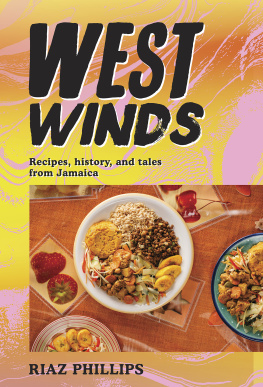
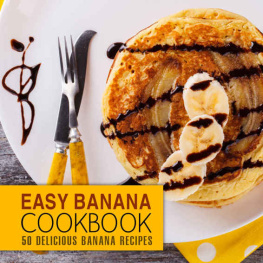
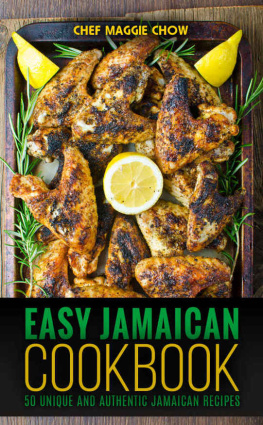
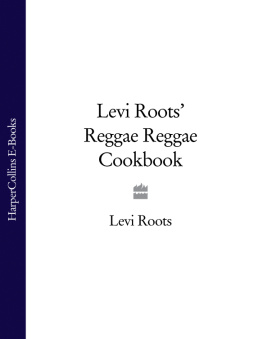
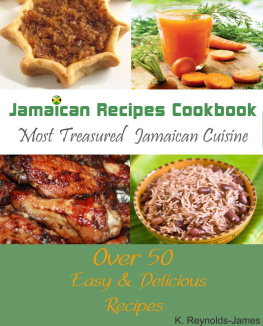
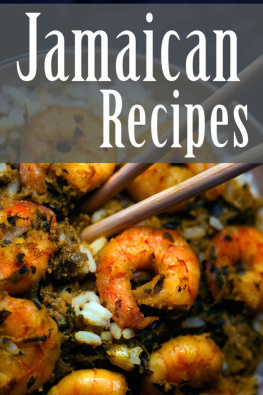
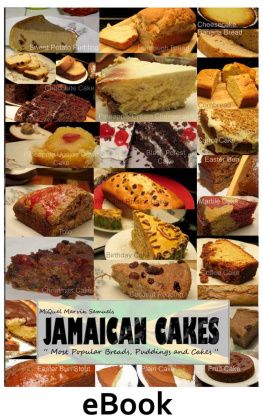
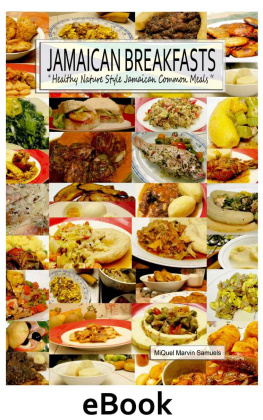
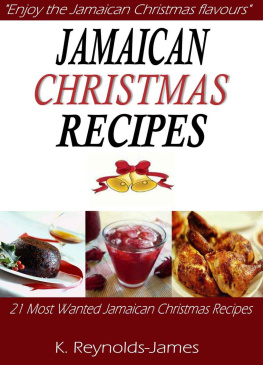
 Decorations by Mary Stubberfield Serif London This e-book first published 2014 by Serif 47 Strahan Road London E3 5DA www.serifbooks.co.uk Originally published, in slightly different form, in 1996, and as The Jamaica Cookery Book by Aston W. Gardner & Co., Kingston, in 1893. Revisions to this edition copyright Stephen Hayward, 1996, 2014 Decorations copyright Mary Stubberfield, 1996 Foreword copyright Cristine MacKie, 1996 Footnotes copyright Georgia Kandunias, 2014 This edition copyright Serif, 1996, 2003, 2014 All rights reserved. No part of this publication may be reproduced, transmitted or stored in a retrieval system, in any form or by any means, without prior permission in writing from the publishers ISBN 978 1 909150 21 8 e-book produced by Will Dady proof-reading by Georgia Kandunias Cover design by Pentagram CONTENTS
Decorations by Mary Stubberfield Serif London This e-book first published 2014 by Serif 47 Strahan Road London E3 5DA www.serifbooks.co.uk Originally published, in slightly different form, in 1996, and as The Jamaica Cookery Book by Aston W. Gardner & Co., Kingston, in 1893. Revisions to this edition copyright Stephen Hayward, 1996, 2014 Decorations copyright Mary Stubberfield, 1996 Foreword copyright Cristine MacKie, 1996 Footnotes copyright Georgia Kandunias, 2014 This edition copyright Serif, 1996, 2003, 2014 All rights reserved. No part of this publication may be reproduced, transmitted or stored in a retrieval system, in any form or by any means, without prior permission in writing from the publishers ISBN 978 1 909150 21 8 e-book produced by Will Dady proof-reading by Georgia Kandunias Cover design by Pentagram CONTENTS